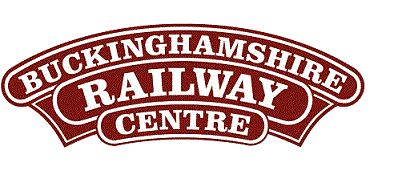
BRC Website Home
Quainton Virtual Stockbook - Where are they now?
Andrew Barclay 0-4-0ST No. 776 Punch Hull

BRC Website Home
Quainton Virtual Stockbook - Where are they now?
Andrew Barclay 0-4-0ST No. 776 Punch Hull
Built for stock in 1896, L776 was outshoped from Andrew Barclay's Kilmarnock works as Firefly against an order of June 1899 to the Mellingriffith and Co. Ltd for their Tin Plate works at Whitchurch, Glamorgan. It arrived there in November of that year, where No. 776 remained for a number of years. She was sold in about 1925 to P. Baker Ltd of Cardiff who named it Albion after the company's works. Baker rebuilt it in 1928 and in 1931 sold it to the Oxford and Shipton Cement Ltd, latterly the Alpha Cement Company of Shipton-on-Cherwell, Oxon. This firm later became part of Associated Portland Cement Manufacturers who transferred the engine to their Houghton Regis, Dunstable, plant in 1952 where it was named Punch Hull after one of their drivers. In 1966 it was replaced by a diesel and in the March of the following year was presented to Quainton Railway Society. It arrived at Quainton in April 1969 via temporary storage at the London Preservation Society's (QRS forerunner) Skimpot Lane, Luton, storage depot. No. 776 was sold in July 1987 to the Rutland Railway Museum, Cottesmore, where restoration started, as described below. The engine has now been renamed Firefly. The new owners carried out a number of major tasks, including turning the tyres and journals and fitting a new crank pin to the left hand driving wheel. In parallel to this, research into the locomotives history was carried out using the official Andrew Barclay records in the care of Glasgow University. No official works photographs of No. 776 exist, though some photographs of similar locomotives of that era have been obtained. A comprehensive collection of drawings are available, including those of the frames, boiler and tank. Also available are original specification sheets. A complete breakdown of the original order was found, including the delivery instructions to the Mellingriffith Tin Plate works. Detailed descriptions of the livery specified that the name Firefly be placed in gold letters on the tank sides. After obtaining this information, the new owners decided to drop the name Punch Hull, and revert to her original name Firefly. The locomotive was stripped to the frames and laid on blocks. The rear section of the frame was cleaned and painted, but due to changes in personal circumstances for the two owners, progress stopped. The frames were then placed on a wagon chassis and parked out of the way until such tine as the work could be restarted. In August 2005, a majority shareholding was obtained by a new owner, and restoration to full working order restarted. The frames were moved from their wagon, and placed on blocks under cover in the Rutland Railway Museum yard. Several fatigue cracks were found in the cast iron saddle that holds the front of the boiler and also act as the front frame stretcher. These cracks, although they had been plated to hold the casting together, run right through the casting, leaving the front end held together by the boiler and the buffer beam. The front buffer beam was removed, the rear having been removed some years ago, and a welder engaged to repair the saddle. At the same time, an additional stretcher was welded in place under the footplate, to try and relieve some of the stress. The entire frames were taken back to bare metal, primed and painted. The horn guides were removed and machined, as have the axle boxes, which were then reassembled with new journal bearings. At that time the chassis was expected to be re-wheeled during the summer 2006. The timber of the buffer beams was completely rotten and metal sandwich plates either side were badly corroded and bent. All new dome headed bolts were machined and the materials ordered to replace the buffer beams on both ends of the locomotive. The tank undersides were badly corroded, and require repair. The cab and bunkers also require attention. A number of missing pieces have been located, notably the steam brake cylinder and two correct pattern injectors. Buffers to replace the dumb buffers fitted to the rear end have also been procured. For sometime updates were available for a time from Firefly's own webpages, though this has not been updated since 2008, and is not a safe site. It appeared from the host's Rocks by Rail website this restoration then stalled. The locomotive then moved to the Pontypool and Blaenavon Railway for a time, before moving again to the Northampton and Lamport Railway, under new ownership, on the 28th March 2017, where restoration has restarted. Current Location - Northampton & Lamport Railway, Chapel Brampton References: |
| Builder :- | Andrew Barclay | Date Built :- | 1896 | Works No. :- | 776 |
| Running No. :- | - | Name :- | Punch Hull | Wheel Arrangement :- | 0-4-0ST |
| Tractive Effort :- | 16,290 lb | Boiler Pressure :- | 160 psi | Cylinder Dimensions :- | 14" x 22" |
| Weight :- | 26t 0c | Driving Wheel Dia. :- | 3' 0" |
Text © Quainton Railway Society / Photographs © Quainton Railway Society or referenced photographer
Email Webmaster
Page Updated: 23 October 2018